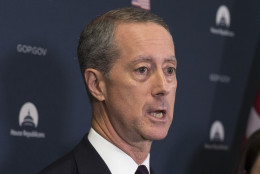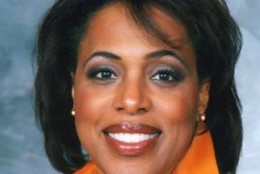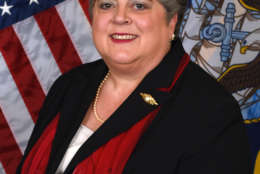Defense
-
Congress is coming in better late than never to try to fund the Defense Department for 2017.
March 01, 2017 -
President Donald Trump’s first address to a joint session of Congress offered few new insights into his management agenda, only reiterating his desire to reduce regulations.
March 01, 2017 -
Congress wants more from the Trump's defense budget after hearing about military expansion for months.
February 28, 2017 -
Columbia Technology Partners Ready to Prime host Allen Scott talks of Sharon Jones of DISA and author Debra Fine.
February 28, 2017 -
The Pentagon’s internal improvement plan, known as Better Buying Power, coincided with several consecutive years of declines in the rate of cost growth for the Pentagon’s major weapons systems, from more than 9 percent in 2011 to 3.5 percent in 2015, the lowest level since 1985.
February 28, 2017 -
The Trump administration's "budget blueprint" includes a $54 billion increase in Defense spending, bringing the top-line spending for Defense to $603 billion and $462 billion for non-defense discretionary spending.
February 27, 2017 -
2017 may finally offer a peek of sunlight for another base realignment and closure cycle. Congressional resistance to BRAC is faltering, said Chris Preble, vice president for defense and foreign policy studies at the Cato Institute, and that may bring some fiscal savings to DoD.
February 27, 2017 -
Tim Solms, the vice president for U.S. federal and managing director worldwide government at Juniper Networks, makes the case for how software-defined networking and automation can help the Pentagon develop an open, agile and elastic infrastructure to meet its mission needs.
February 27, 2017 -
Dave Mihelcic, the recently retired chief technology officer at the Defense Information Systems Agency, said a pilot to test a software defined environment is opening the door to cloud applications that DoD can more quickly deploy and better secure.
February 24, 2017 -
DoD may clarify its independent research and development policy to make it easier for industry to consult with the government.
February 24, 2017 -
The Obama administration was the source for a large number of new rules for federal contractors. One rule for defense, by executive order, requires special handling of controlled, but unclassified, information (CUI). Mark Tanner, president of security consulting company Arixmar, joined Federal Drive with Tom Temin to explain the rule in depth.
February 24, 2017 -
Given the Defense secretary’s reputation for being a no-nonsense leader, everyone in the DoD management establishment should take this directive very seriously.
February 24, 2017 -
The Navy has just stood up a new “digital warfare” office, prompted by the notion that the service is awash in valuable, but largely untapped data in areas ranging from acquisition, maintenance and audit readiness to the ways it trains and equips its sailors.
February 24, 2017 -
Freezing civilian federal workers might leave the Navy short the engineers it needs to build up to 355 ships.
February 23, 2017 -
The Marine Corps is in the midst of a sweeping review of its information technology workforce, the early results of which have confirmed what top officials suspected: many employees’ official position descriptions don’t have much to do with what they actually do for a living.
February 23, 2017















